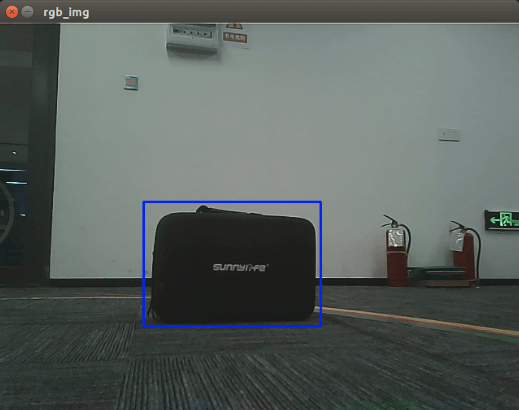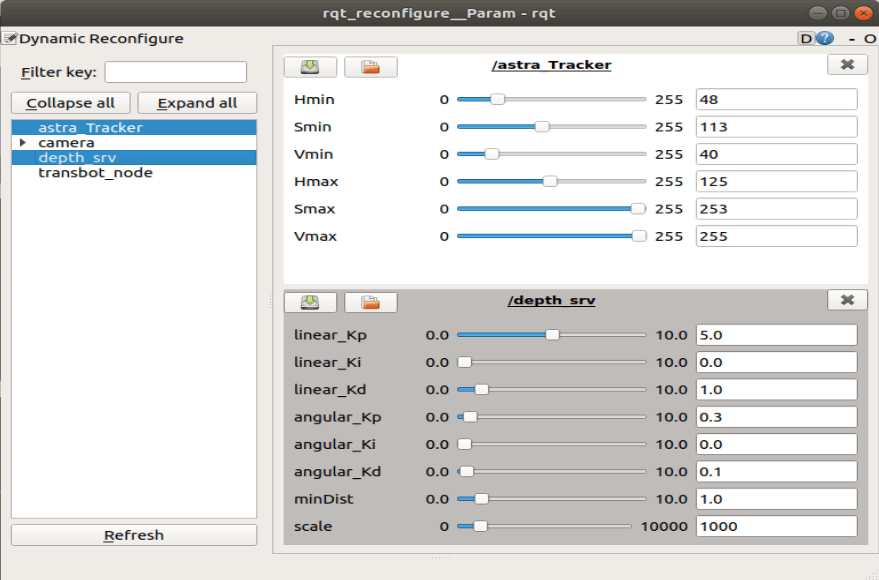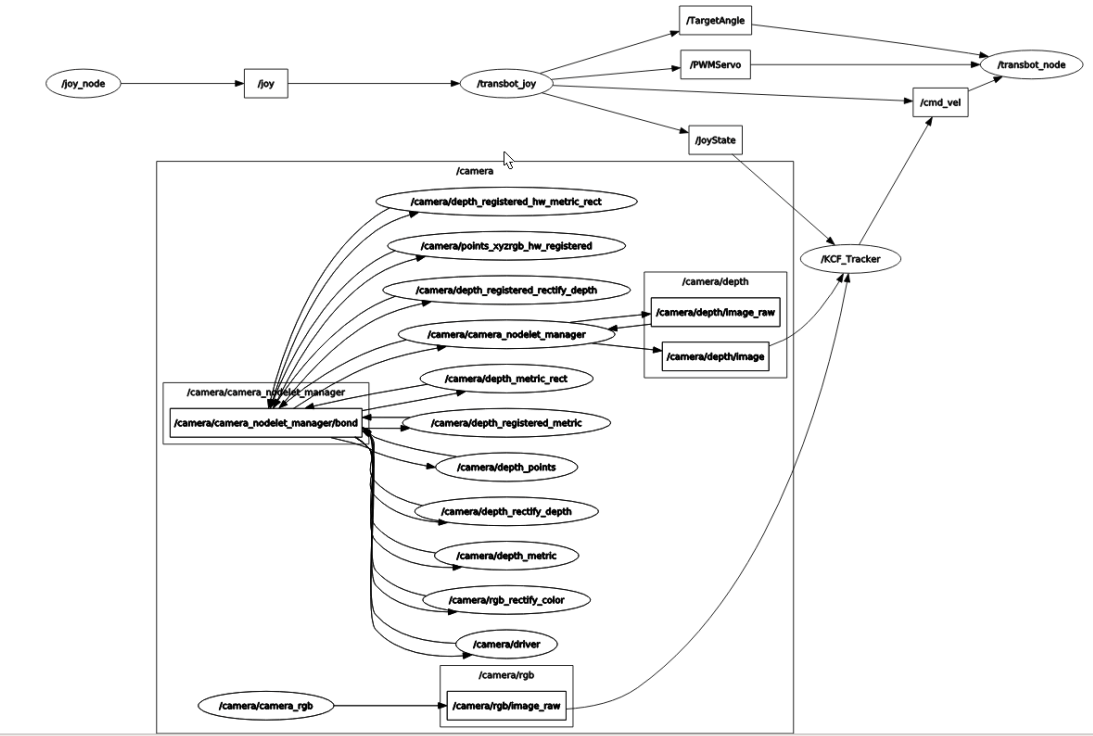3、Astra object tracking
3、Astra object tracking3.1、Introduction3.2、Steps3.2.1、Start up3.2.2、Identify3.2.3、PID adjustment3.2.4、Target follow3.3、C++ KCF3.3.1、 Usage3.3.2、keyboard control3.3.3、Node relationship graph
3.1、Introduction
Function package:~/transbot_ws/src/transbot_astra
Website:https://learnopencv.com/object-tracking-using-opencv-cpp-python/#opencv-tracking-api
Object tracking is to locate an object in consecutive video frames.
- Comparison of OpenCV algorithms
| Algorithm | Speed | Accuracy | Description |
|---|---|---|---|
| BOOSTING | Slow | Low | It is the same as the machine learning algorithm behind Haar casades (AdaBoost), but it has been born for more than ten years, a veteran algorithm. |
| MIL | Slow | Low | It is more accurate than BOOSTING, but the failure rate is higher. |
| KCF | Fast | High | Faster than BOOSTING and MIL, but it is not effective when there is occlusion |
| TLD | Middle | Middle | There are a lot of erro |
| MEDIANFLOW | Middle+ | Middle | The model will fail for fast-jumping or fast-moving objects. |
| GOTURN | Middle | Middle | A deep learning-based object detector requires additional models to run. |
| MOSSE | Fastest | High | The speed is really fast, but not as high as the accuracy of CSRT and KCF. If you are looking for speed, you can choose it. |
| CSRT | Fast - | Higher | Slightly more accurate than KCF, but not as fast as KCF. |
3.2、Steps
Note: The [R2] of the handle remote controller can [Pause/Open] for all functions of robot car
3.2.1、Start up
Start the bottom driver control, and it can also be placed in other launch files. (Raspberry Pi side)
roslaunch transbot_bringup bringup.launchMethod 1
Start up Astra camera(Raspberry Pi side)
xxxxxxxxxxroslaunch transbot_astra DepthSrv.launch colorCamera:=falseStart color object control (virtual machine)
xxxxxxxxxxroslaunch transbot_astra AstraTracker.launch VideoSwitch:=true tracker_type:=KCF- colorCamera: Whether to start the color camera. true, start the color camera; false, do not start.
Method 2
Note: press【q】key to exit.
xxxxxxxxxxpython3 ~/transbot_ws/src/transbot_astra/scripts/astra_Tracker.pyThis method can only be activated in the master controller that the camera is connected.
- colorCamera parameter: whether to start the color camera; start is True; otherwise, it is False.
- VideoSwitch parameter: whether to use the camera function package to start; it corresponds to the colorCamera parameter and cannot be the same.
Set the parameters according to your needs, and you can also modify the launch file directly, so you don't need to attach parameters when you start.
3.2.2、Identify
After starting, enter the selection mode, use the mouse to select the location of the object, as shown in the figure below, release it to start recognize.

Keyboard key control:
【r】:Color selection mode, the mouse can be used to select the area of the color to be recognized (cannot exceed the area range).
【f】: Switching algorithm: ['BOOSTING','MIL','KCF','TLD','MEDIANFLOW','MOSSE','CSRT','color'].
【q】: Exit the program.
【Space key】: Color follow.
3.2.3、PID adjustment
Dynamic parameter
xxxxxxxxxxrosrun rqt_reconfigure rqt_reconfigure

Select【depth_srv】node. The slider is always in the dragging state, and no data will be transferred to the system. The data will actually be transferred to the system when you release it; you can also select a row and then slide the mouse wheel.
Parameter analysis:
[Linear_Kp], [linear_Ki], [linear_Kd]: PID control of linear speed in the process of car following.
[Angular_Kp], [angular_Ki], [angular_Kd]: PID control of angular velocity during the car following process.
[MinDist]: Follow the distance and keep this distance all the time.
[Scale]: PID scaling.
3.2.4、Target follow
After identifying is ok, click [Space key] on the keyboard to execute the color following program.
- View node
xxxxxxxxxxrqt_graph
The node [astra_Tracker] will publish the position of the identified object in the image to the node [depth_srv], and the node [depth_srv] will issue the car following control instructions.
3.3、C++ KCF
3.3.1、 Usage
Start up(Raspberry Pi side)
xxxxxxxxxxroslaunch transbot_astra KCFTracker.launch
After starting, enter the selection mode, use the mouse to select the location of the object, as shown below, release it to start recognition.

3.3.2、keyboard control
【r】:Selection mode, you can use the mouse to select the area to be identified.
【q】:Exit the program.
【Space bar】:Target tracking; move the target slowly while following, and the target will be lost if you move too fast.

Parameter analysis:
【linear_Kp】、【linear_Ki】、【linear_Kd】:PID control of linear speed during robot following process.
【angular_Kp】、【angular_Ki】、【angular_Kd】:The angular velocity PID control during the following process of the robot.
【minDist】:Follow the distance and keep this distance all the time.
3.3.3、Node relationship graph
xxxxxxxxxxrqt_graph
